Originally published: May 3, 2016; updated / re-published May 4, 2019
Photography—it’s all about passion, skill, and commitment. Ever wondered what a day in the life of a photographer is like? Every week, we ask a photography pro to document and share how they spend their day at work, giving you an exclusive, behind-the-scenes look at their shooting schedule.
Dream job alert! This week, we’re spending the day at Lucasfilm HQ with Joel Aron, one of our favorite community members on 500px. During the day, Aron is one of the people responsible for bringing the Star Wars story arc to TV. He supervises the CG VFX and lighting behind the hit animated series Star Wars Rebels and previously Star Wars: The Clone Wars, creating and guiding the overall look, tone, and mood of every episode that reaches your TV screens.
It’s his Rembrandt-inspired, painterly approach that has created the show’s signature look, which is unlike any other animated series on TV. To his fellow crew members, he brings experience from working on popular films like Schindler’s List, Jurassic Park, Pirates of the Caribbean: Dead Man’s Chest, Star Wars Episode III: Revenge of the Sith, along with a long list of credits.

When he’s not busy at his desk, this California-based photographer also spends time creating and shooting images with his go-to Leica M, Leica SL, and his Summilux-m 50 ASPH lens. From his striking portraiture to vivid street scenes full of life, he brings to his indelible photography the same techniques, skills, and cinematographer’s eye that he uses on the set of his production work. Look through his profile and his website, and you’ll find that a lot of his photography and film production work draw inspiration from the other. In fact, his co-workers in the Lucasfilm campus look to him as an instructor, as he has lead many classes on the art and discipline of photography.
Read on to learn how he spends an exciting, action-packed 24 hours, working on the set of Star Wars Rebels and juggling his day job with his love for photography!
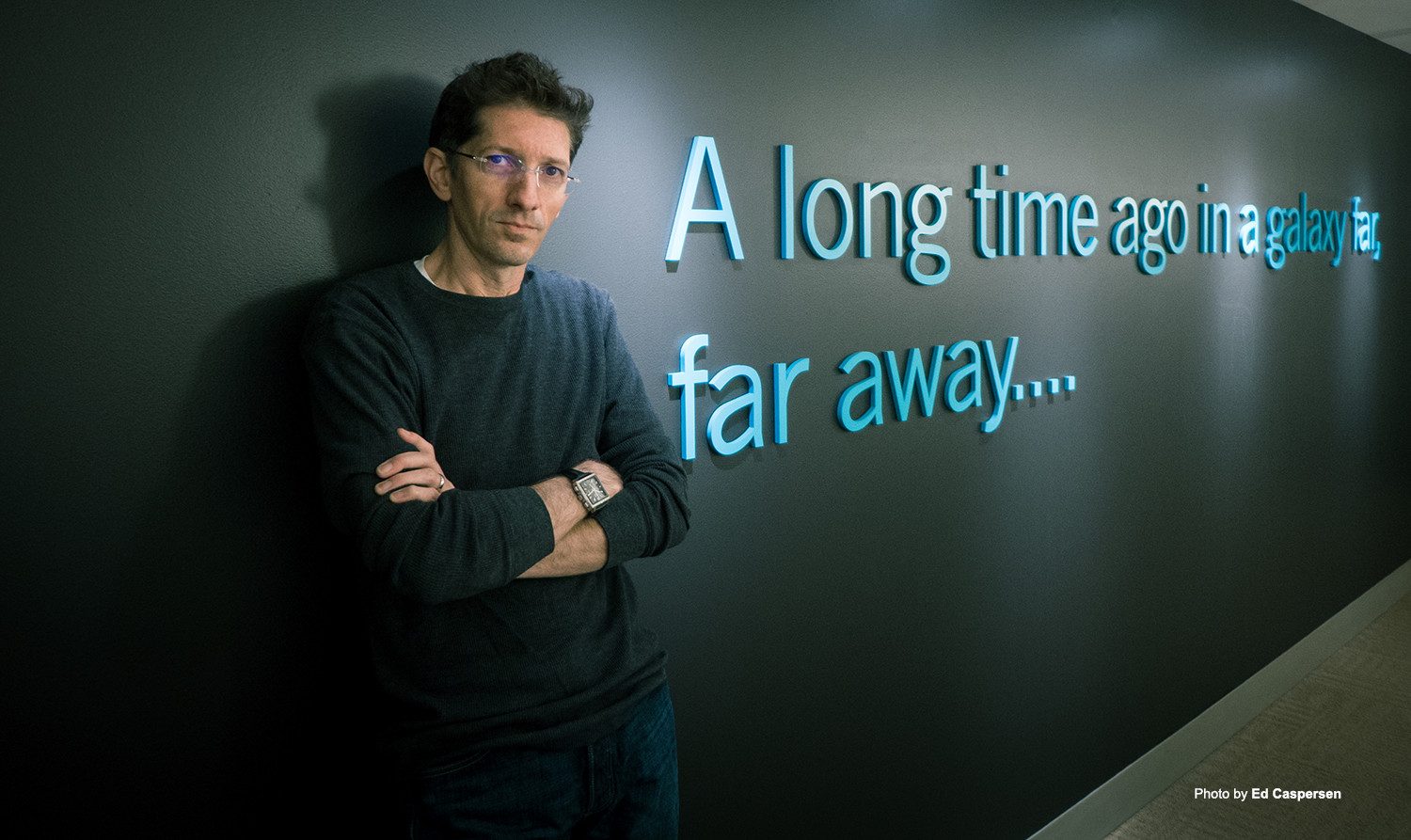
7 A.M. This is the first look at my day. The overseas studios that we work with on the show are now ahead of us by a day, and have delivered all material and emails for review. I am married to my calendar — its daily view is constantly taking on the appearance of a Tetris game in the final throw of no place left for the next shape. We are running nearly 12 episodes at once, all in different states of progress based on a very tight milestone list that has nearly zero wiggle room. We do not stop for breaks in between episodes or seasons to re-group. Our production is a fast-moving machine that needs constant correspondence internally, as well as overseas. So this first scratchy-eyed view of my calendar on my iPhone, and the emails that have arrived set the pace for my day. But first, my daughter Charlotte and I have our morning ritual of seeing who can procrastinate more about getting out of bed and ready for the day.
8 A.M. Off to take Charlotte to school. On the way out the door, I grab my Leica M, where it slings over my shoulder for the rest of the day. My M is always ready. Every night, I go through my usual pattern of swapping batteries, and checking for space on the card. It was only 5 years ago that this ritual began — checking shots left on the roll of film, and grabbing a spare roll of HP5 from the fridge, if needed. Mounted on my camera is almost always the Summilux-50, and depending on where I’m heading that day, it may be the Summicron-35. This makes the camera lighter and easier to schlep all day. But off I go to drop Charlotte off at school, and head into San Francisco.
9 A.M. The walk from the garage to my office is spent with my face pointed at my phone, as I continue to check mail and prepare for my first attack of the day. I’ve often spent minutes in the garage elevator having not even pressed a button to send me on my way. By the time I arrive in my office, my mind is set for how the next hour is to be spent. This is also the only time I take my camera, and place it on my desk. This is a daily event, and I can’t imagine a day of work where my camera is not within my view. Often, I’ll have my camera with me to document our show in its several stages of production. For that, I’m always using the 35mm at f/5.6 so that I can zone focus and not have to look through the viewfinder. My 35 and I have a very good relationship. It has taught me well through nearly a decade of use for street shooting, from how far my subject is to being able to take shots with confidence that I know with 100% confidence what I am shooting is in frame and in as close to sharp focus as possible.
Back to my day. If there are no burning questions that may have a few artist overseas waiting for feedback before they call it day, I jump right into a desk review of all shots for lighting and FX that have come in overnight. I quickly review each shot, making mental notes for each, so that I can be prepared for when we have our lighting dailies at 11:30. By reviewing early, we cut down how much time we need to spend. It’s all about saving time on our show, and making creative decisions. I need to script my notes to the studio in a way that is brilliantly clear and concise. These notes will need to sent out later in the day by our ridiculously talented production staff. Then once received overseas, they need to be translated into Chinese and Vietnamese. So I need to constantly think of how my notes will be translated. Very often, spoken notes will not do. This is when I create a “paintover” image to show exactly how a shot needs to look.
10 A.M. Meetings and more meetings. Our show does not stop. As I noted before, there are several episodes that are in one state or another of progress, so we often get together with other departments. It’s these early meetings in the day where we take care of making sure we have answers for all overseas questions. We make sure nothing is falling through the cracks. We don’t miss anything, and we respond to everything. It’s been said of our show, that we send “Thank you” emails to “Thank you” emails. I’ll often have my camera with me to document creative meetings, like our Lighting Concept Kickoff Meeting. This is the most important meeting for me. In this meeting, I sit with our Executive Producer and showrunner Dave Filoni, our Art Director Kilian Plunkett, and Lighting Concept painter Chris Voy. We’ve all been together, doing this exact meeting since way back on The Clone Wars TV show, before we went on to doing Star Wars Rebels. We will go over each of the 15 or so frames of an episode that I have hand-picked to represent the look of the episode. Chris then has 2 weeks to complete these lighting concepts, which will later be used when I kick off the lighting direction to the overseas studio.
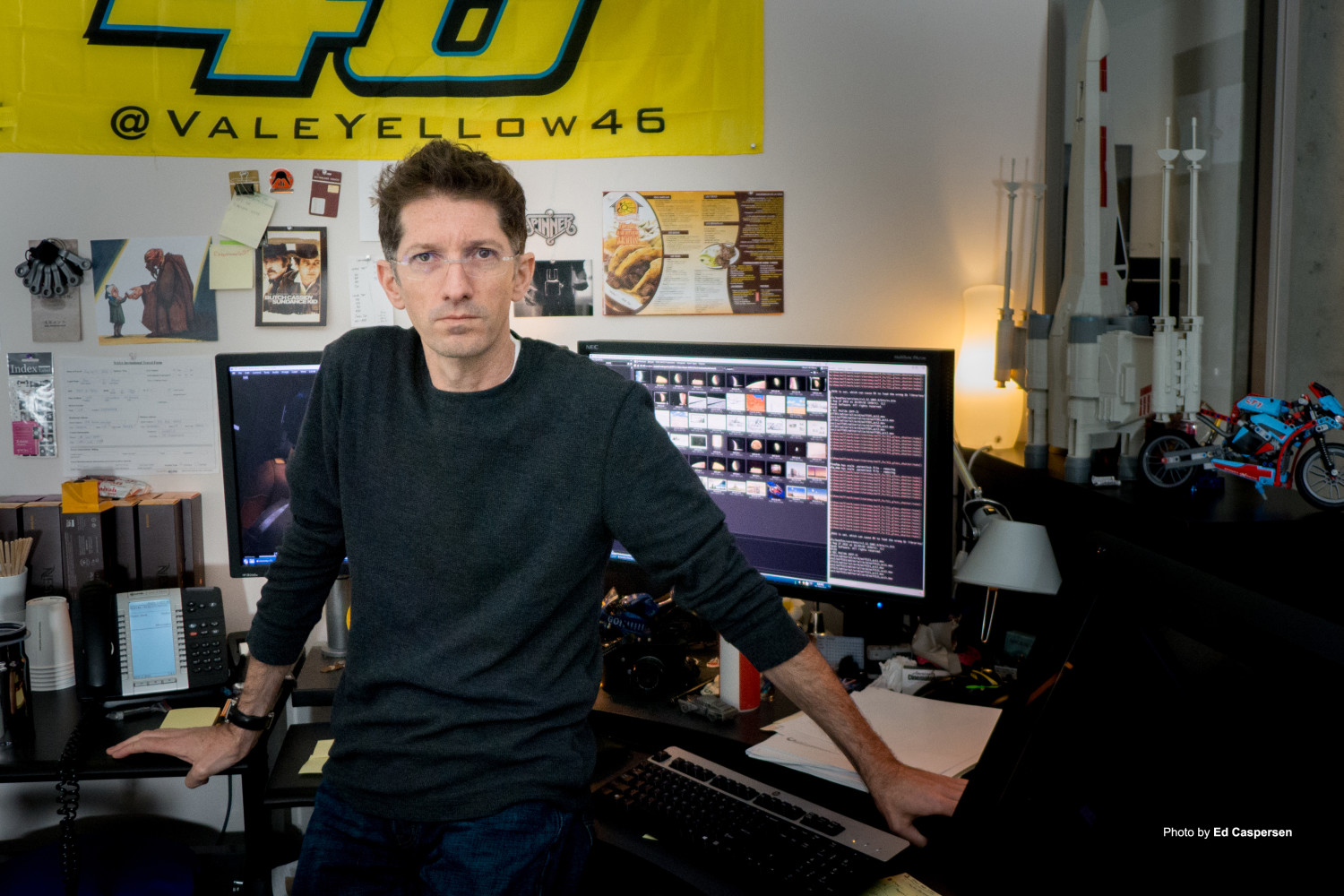
11 A.M. Dailies. In my office, I have a ridiculously large professional grade plasma monitor, where a Mac Mini is used for the purpose of playback of dailies. This same setup is often the source of background visuals when I’m in my office working. It’s usually in the form of whatever flavor of movie I need to study for inspiration or reference for upcoming kick off meetings. Dailies a shot-by-shot review, where I will have Chris and Kilian with me, along with my production coordinator. Here, we either approve the shots, or give detailed notes and paintover from me to help guide my teams overseas to nail the lighting as I want it to be.
My lighting style at work is very much like what I do for my photography, in that I obey the work of the masters of both classic art and portrait photography. This style is used by almost all classic and seasoned cinematographers. I am somewhat the cinematographer of the show for lighting, where our story board team and episodic directors drive the visual composition, and I work with them to build the focal lens guide per episode.
I’ve had the experience of working with some of the best cinematographers in the world. My most memorable experience was a year on location for the feature film, Peter Pan in Australia. I worked alongside Don McAlpine, one of the most painterly cinematographers in the business. He would light a set with his team, as if was a painting, and compose the lighting from shot to shot. There was absolutely no “canned” lighting. He is a craftsman with where he wants light. It was being exposed to this style, that I not only learned how to push the envelope of photography. For my role as a digital cinematographer, I had to make every shot look its absolute best as a portrait. It’s been over ten years since working with Don. Now on my own, I channel his methods to make ours have a look that is unlike any animated TV series on television. It took years of training my teams overseas at the studios of CGCG in Taipei and Sparx in Vietnam.
If you’re going to be a lighter on our show, I need you to understand everything that is Rembrandt, Sargent, Vermeer, and Caravaggio. Sargent is always my go-to for look of the overall set and basic character lighting — it’s exactly what I target for all of my photographic portrait work. It’s a very different way of thinking for being a CG lighter, and it takes years to get right.
I push hard the photography talk with my team. They all know that I have my camera with me nearly all the time and that it’s a part of me. It’s just a matter of time before photography comes up in my notes or kick-off meetings. Exposure is something that needs to be experienced, and it’s because of this that I will suggest that if you want to be eye-to-eye with what I see, you need to understand the manual working of a camera.
So my notes in dailies are not usually simple comments like, “Make it brighter…” Instead, I will flour the notes with photographic terms of “stops” — and even more so, lighting composition so that the attention in frame is exactly where it needs to be, without placing visual emphasis on areas in frame that the audience doesn’t need to be seeing. It’s this reason, that we review every single shot as its own visual work of art.
12 P.M. Lunch at my desk. Right now on my dailies review monitor, I have the movie Empire of the Sun playing. I’ll mostly likely have let it play twice today. It’s a masterpiece of filmmaking. It will always have a special place in my heart as one of the most visually-stunning and inspiring moving pictures ever made. Today, I’m having it up to play for the about the fifth time in the last few weeks.
I study the lighting of movies. Like with my day job involving decrypting a lighting design of something inspiring for the show, I will take notes on how I can do the same with my portrait photography work.
For today, I want to study all of the scenes in the living quarters at the prisoner camp — on how it’s a delicate balance of light shapes from natural lighting coming from a single side of the set. In this case, it’s a large circular window with frames of glass that make up for a perfect gobo shape. I’ve tried several times to emulate this lighting for my portrait work. Using studio lights is sometimes overpowering, and they are best used for my fashion photography for clients that want a clean background. But in order to emulate a set like I’m seeing now in the movie, I need to use filtered and bounce light. I cannot do this in CG, so it’s always a challenge to go for a look that you see in a movie. You think you can create this look with CG lights. But it’s, in fact, very difficult. I work a lot with the lighting teams to nail down a sun-lit look. Having knowledge of physical photography is key here, in that as long as you understand the principles of camera-lens exposure, you know how to balance the subtle ambient tones and key light strength. Again, a review of a Sargent or Rembrandt painting is key here. The lighting in their works of art were not studio lights. They were rendered from natural light, and somehow nail the look of a perfectly exposed photograph.
1 P.M. Layout review of an entire episode’s act. This is when our animation supervisor and myself are joined with the episodic and supervising directors in an editors’ suite and go over the delivery of the layout. Layout is the process when the overseas studio will assemble the shots in CG (using Maya software) with the assets that are the set, and characters. My primary role here is to make sure that my lens selections are working as planned, and that the camera movement and general composition is working. It’s also at this time that I start thinking of my lighting design for the episode. Now I can start seeing the episode with the actual set, and not as hand-drawn storyboards. Once layout acts are approved is when the animation starts. Layout teams only have a week per act, so we need to nail it down fast. What we see is what we get for camera and composition.
2 P.M. Lighting Concept Kickoff. I’ve got my camera with me, and we’re going over the 15 selected frames from the episode. We have each image posted up on a large design board, and Filoni then does quick sketches over the printed frame based on what we’ve talked about for the episode. In today’s case, I’m all over my reference from Empire of the Sun. I want that depressing lighting of having only the sun be the light, while deep in a room that is void of power. All the time when Filoni turns to scratch his ideas on the images, I’m rolling off behind-the-scenes images of all of us. I’ve been doing this for so long, that nobody even is even aware that I’m shooting. The only way you would know, is the sound of the little “kiss” my Leica shutter makes.
3 P.M. FX annotations. This is a big part of any day, when my annotations are due. I will go over the episode shot by shot, and dictate exactly what I am expecting to see for the visual effects.
4 P.M. More annotations and FX development time. Today, I’m working on a setup to make an environment of clouds based on a look I did for an episode early in Season 2. What I’m doing now is taking the individual paintings of clouds that I created, and seeing how they hold up if I tweak each one to have a look that is more nebulous, so that I can assemble the images in Z-depth. This is to give the illusion that — when viewed — has the sense that our set is that of a huge cluster of colorful and undulating shapes. It’s this type of work that I’ve been doing since I was hired at Lucasfilm in 1991. I prefer to paint my look in Photoshop, and then use Maya or Nuke to bring the painting to life. I’ll often paint up to 25 layers for an effect that I can use, stacked and spaced over each other to give the illusion of depth. It’s exactly how I created the comet in the movie Deep Impact, as well as nearly all painterly visual effects in my career.
I don’t like having the computer do it all for me. It’s like that age-old “digital vs. film” conversation. But for me — just as with my photography — I’ll let the digital take the wheel when it’s needed. For the most part, I want to keep as close to analog as possible so that whatever I do has the look and feel that I crafted the image by hand. Almost every portrait I’ve shot at home in my studio is as “in-camera” as possible. I’ll create a filter in real world before I ever have Photoshop do it.
In the case of creating an element for our TV show, instead of using Maya to create a look of sand blowing by. That would’ve taken a day or so to do. I just went and got some salt, sugar, and Splenda. Then, I sprinkled it in front of my iPhone 6, shooting slo-mo with my technical director Ed Caspersen, acting as my camera assistant on a makeshift stage that was a vacant desk in an empty room. We were done shooting 30 minutes after we started. By lunch, I had what I needed.
5 P.M. Prep for my lighting kickoff. I usually have weeks to gather material for an episode, and it’s nearly all in my head. So in the hours before a kickoff, I’ll review the episode a few times, and review all notes given on the episode leading up to now. For tonight, I have an episode that is nearly entirely on sets that we’ve been to before. So for most of the planning, I need to think of screen direction and composition for the light. I’ve made notes for myself, and now I am reviewing the lighting concepts so that I am 100% prepared mentally for the meeting which starts at 6:30 p.m. I go for about 3 hours as I memorize each scene that I need to talk about.
6 P.M. Drink a lot of caffeine to get ready. This is the exact time that our entire design room outside my office stops what they are doing for 30 minutes and play MarioKart on their Nintendo DS. I also check in with my coordinator to make sure that our material is ready for the video conference that starts at 6:30.
7 P.M. I’m 30 minutes into the kickoff, and I’ve started with going over all of the visual effects with the FX team.
8 P.M. I’m still talking. I stop every 90 seconds to have what I said translated into Chinese for the Taipei team. I’m only at about 2 of our 3 act episode.
9 P.M. It’s about 9:15. I’ve just said my good night to the team in Taipei on the conference camera. Back at my desk, I see that the emails are starting to roll in from the response of our days’ answers. I carry on reading emails in an exact path that I took this morning back to the garage, with my nose buried into my phone, Leica around my shoulder.
10 P.M. Download the images from the day if I’m not too tired. On average, I shoot about 10-20 images in the work day. Maybe I get one good shot. But in the grand scheme — when we look back at our nearly 10 years of making Star Wars for TV — I’ll have a behind-the-scenes gallery that could be a visual tree of how we pulled off the impossible every day.
11 P.M. Working on post-process clean-up for client portraits for a few hours before bed. I’ve got a few corset portraits for Pop Antique and Dark Garden Corsetry that need to be done this weekend. I also mail a model friend to see if she’s available to come over for a lighting test this weekend. Every month or so, I go through a phase of shooting tests. This weekend, I am going to push my “book-light” setup a bit more, and see if I can get a soft light look in mid-day that has a look of the movie Atonement, with soft key light and cool color filled ambient.
12 A.M. Off to bed. I look at my calendar for tomorrow, which is pretty much a repeat of today with different episodes.
We hope spending this virtual day with Joel gave you glimpse into the day-to-day of working on a Star Wars production. Maybe you’ll find inspiration and use some of his ideas, techniques, and workflow in your own personal and professional projects, as well as to find your own photography style.
Here’s a look at a few more of our favorite images shot by Joel in his stunning portfolio:
Follow Joel Aron
500px: 500px.com/joelaron
Website: joelaron.com
Facebook: facebook.com/joel.aron
Twitter: twitter.com/joelaron
Not on 500px yet? Sign up here to discover more inspiring photographers!

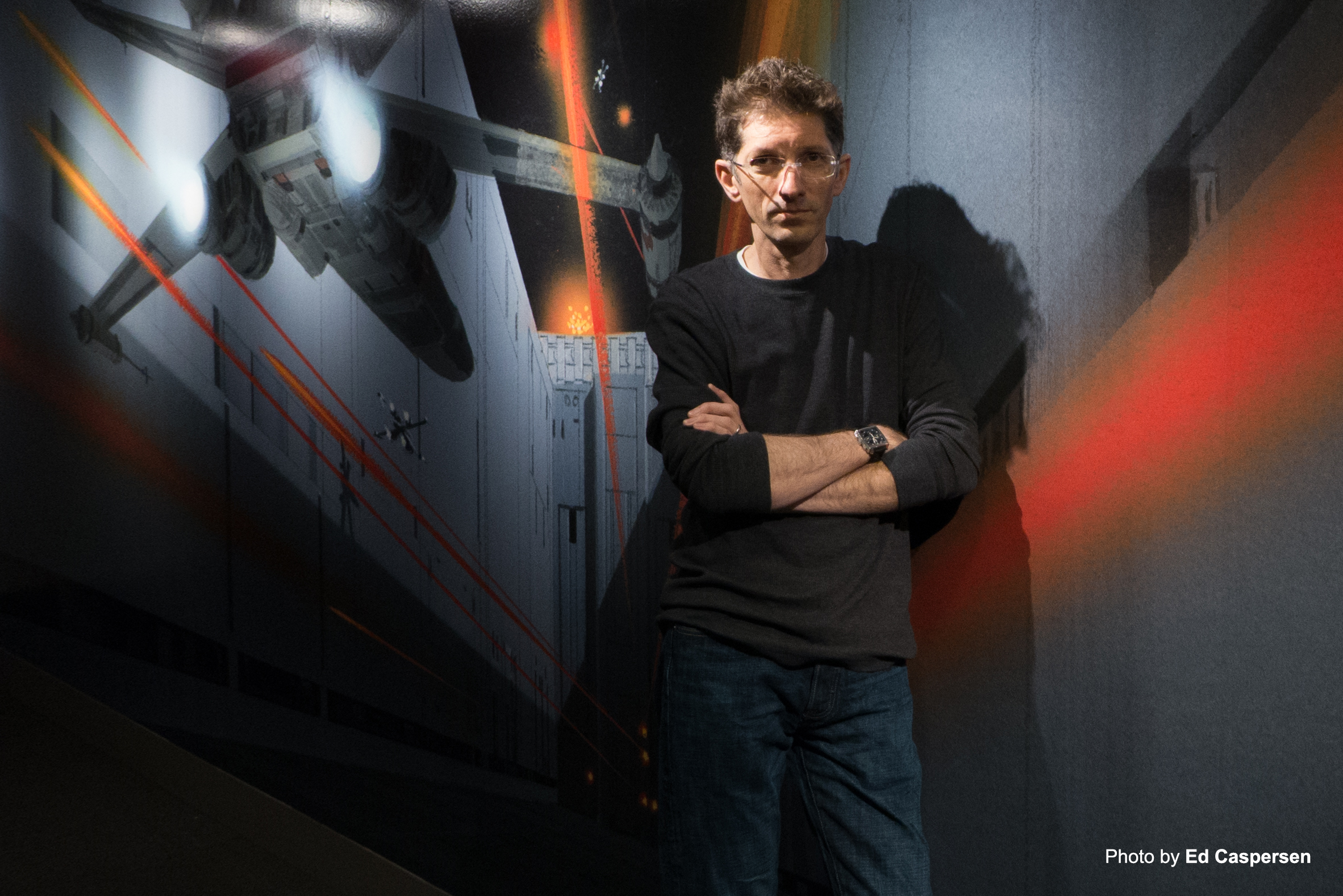
















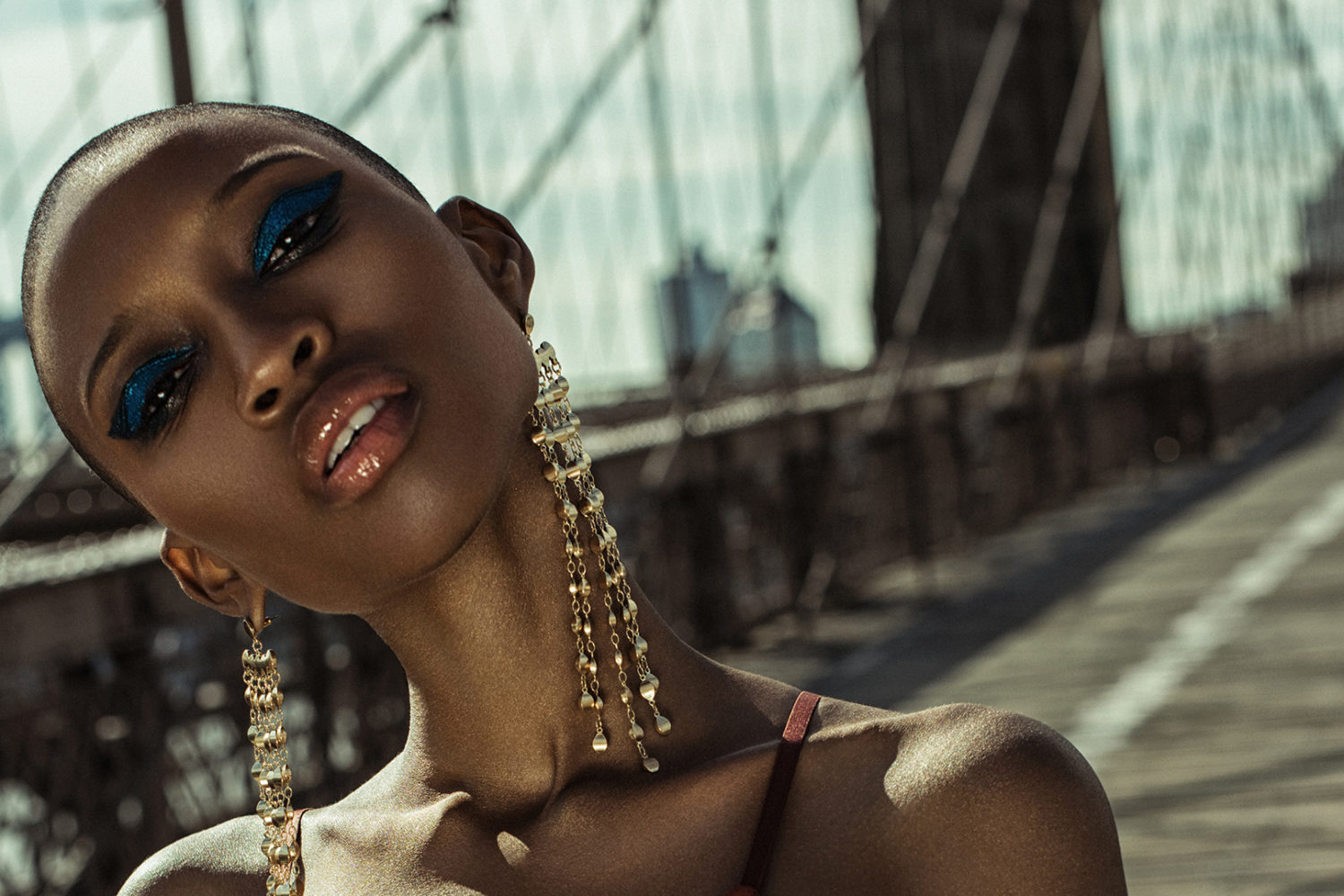
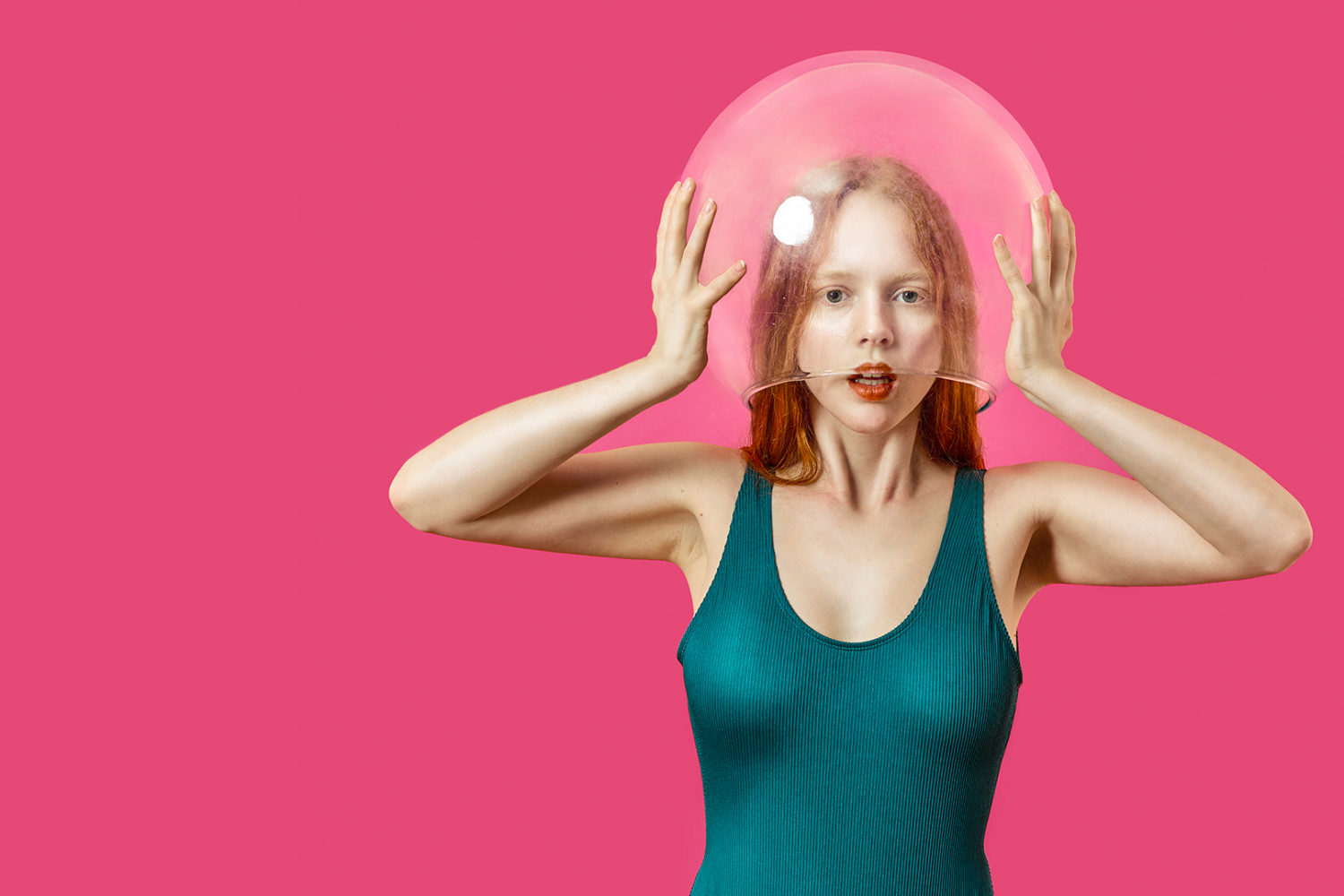

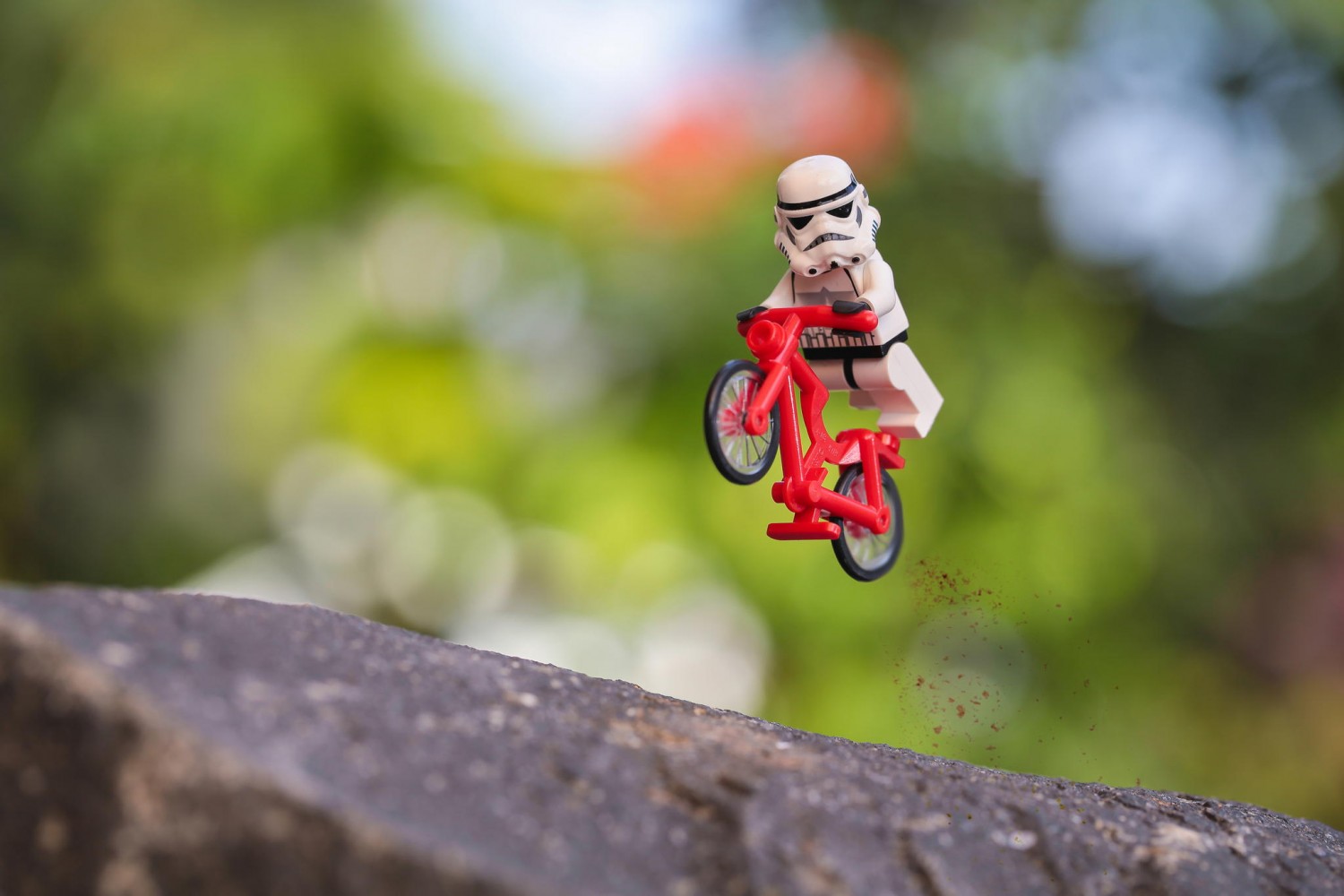
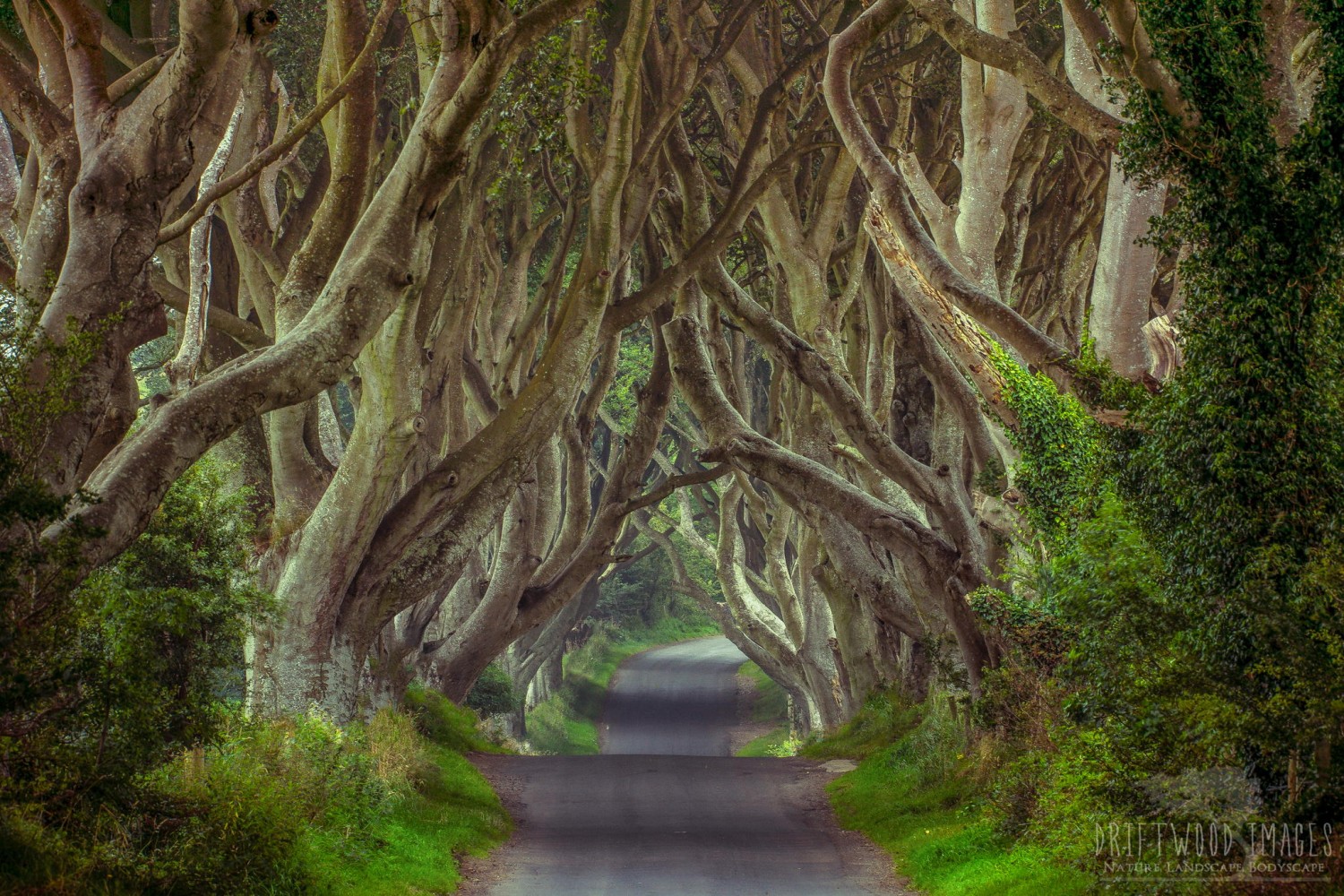
Leave a reply